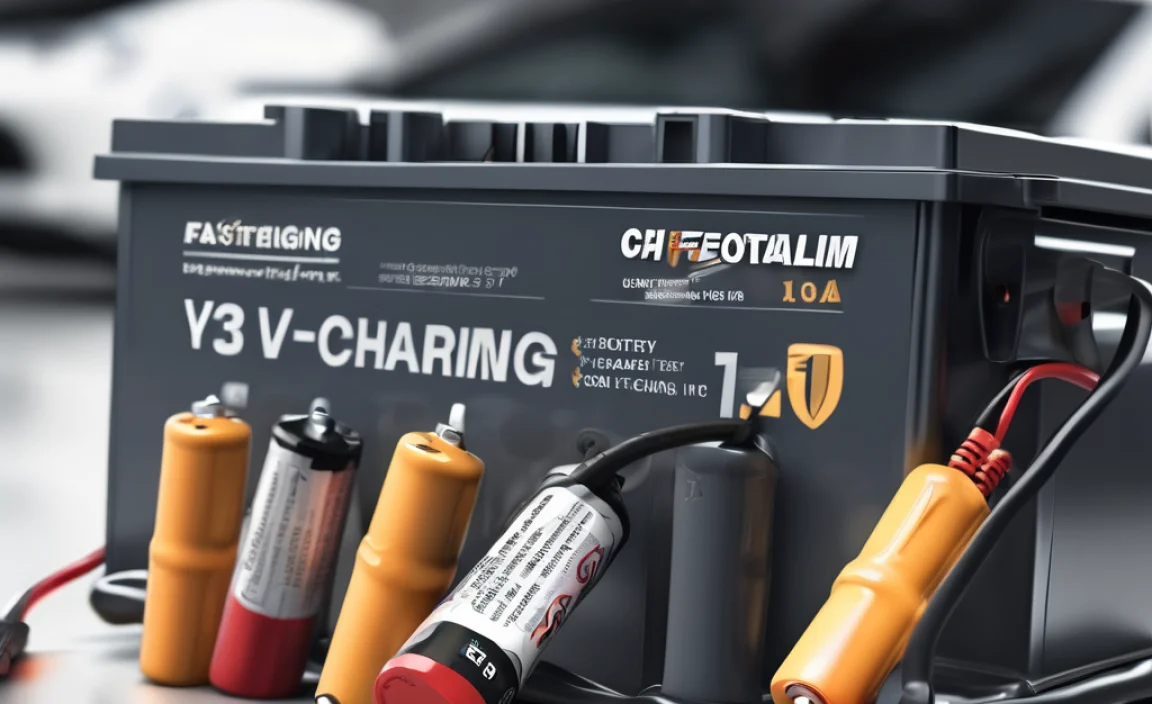Power Up Your Devices: Finding the Best USB Wall Outlet Adapter
Finding the best USB wall outlet adapter can significantly streamline your charging routine, especially in a world where nearly every gadget, from smartphones and tablets to smartwatches and e-readers, relies on USB connectivity for power. Gone are the days of juggling multiple bulky power bricks; the modern wall outlet adapter is a sleek, efficient solution designed to keep all your devices juiced up with minimal fuss. But with a plethora of options flooding the market, how do you pinpoint the one that’s truly the best fit for your needs?
The key to selecting a superior usb adapter for wall outlet lies in understanding your specific requirements and the features that differentiate one product from another. Are you a globetrotter who needs universal compatibility? Do you have a slew of devices that require fast charging capabilities? Or perhaps you’re looking for an adapter that offers multiple ports to handle several gadgets simultaneously? These are the questions you need to ask yourself before diving into the world of USB charging adapters.
Understanding the Core Features of a Great USB Wall Outlet Adapter
At its most basic, a USB wall outlet adapter converts the AC power from your wall socket into the DC power your USB devices need for charging. However, the “best” adapters go far beyond this fundamental function, incorporating advanced technologies and thoughtful design elements.
Power Output (Wattage & Amperage): This is arguably the most crucial specification. Higher wattage and amperage generally mean faster charging. For modern smartphones and tablets, look for adapters with at least 2.4 amps per port, and preferably higher if you own devices that support fast charging protocols like Qualcomm Quick Charge or USB Power Delivery (USB PD). A single-port adapter might offer 30W or even 65W for rapidly charging laptops, while a multi-port unit might distribute power across its ports.
Number of Ports: Do you typically charge one device at a time, or are you a multi-tasker who needs to power up a phone, a tablet, and wireless earbuds simultaneously? Adapters come with anywhere from one to six or more USB ports, including USB-A and the newer, more versatile USB-C.
Port Type (USB-A vs. USB-C): USB-A is the traditional rectangular port found on most chargers. USB-C is the newer, reversible standard that offers faster data transfer speeds and higher power delivery. Many modern adapters feature a combination of both, providing flexibility for older and newer devices. For future-proofing, prioritize adapters with at least one USB-C port, especially if your devices support USB PD.
Fast Charging Technologies: Look for support for proprietary fast-charging standards like Qualcomm Quick Charge (QC) 3.0 or 4+, or the universal USB Power Delivery (USB PD). USB PD is particularly important for charging larger devices like laptops and can intelligently negotiate the optimal charging speed for connected devices.
Safety Features: A good adapter will have built-in safeguards against overcharging, overheating, short-circuiting, and excessive current. These features protect your devices and ensure safe operation. Look for certifications like UL, CE, or FCC.
Portability and Design: For travelers, compactness and lightweight design are paramount. Some adapters are small enough to slip into a pocket, while others might include foldable prongs for easier packing. The overall aesthetics and build quality also contribute to the user experience.
Navigating the Landscape of USB Adapters for Wall Outlets
When searching for the ideal usb adapter for wall outlet, you’ll encounter various types, each catering to different user needs.
Single-Port Fast Chargers: These are excellent for users who primarily need to charge one high-demand device quickly. They often boast high wattage and support advanced fast-charging protocols.
Multi-Port Universal Chargers: These are the workhorses for households with multiple devices or for individuals who need to charge several gadgets at once. They typically offer a mix of USB-A and USB-C ports, sometimes with one port designated as a higher-wattage fast-charging option.
Travel Adapters with Built-in USB Ports: For frequent travelers, these are indispensable. They integrate international plug adapters with USB charging ports, eliminating the need to carry both a separate adapter and a USB charger. Many also include features like surge protection.
Smart Outlet Adapters: While not strictly just USB chargers, some smart plugs can be controlled via Wi-Fi or Bluetooth and may include USB ports. These offer remote control and scheduling capabilities for your charging routines.
Making Your Final Choice: Factors to Consider for Your Best USB Wall Outlet Adapter
Beyond the technical specifications, a few other considerations can help you distinguish the truly best USB wall outlet adapter for your personal use.
Brand Reputation and Reviews: Reputable brands often invest more in quality control and safety testing. Reading customer reviews can provide valuable insights into real-world performance, durability, and any potential quirks.
Your Device Ecosystem: If you primarily use Apple devices, you might lean towards adapters optimized for Apple’s charging standards, though most USB PD chargers are broadly compatible. If you have a mix of Android phones and other gadgets, a versatile multi-port charger with QC and USB PD is likely your best bet.
* Budget: While you don’t necessarily need to break the bank, extremely cheap adapters might compromise on safety or charging speed. Aim for a balance between price and quality, investing in a product that offers reliable performance and peace of mind.
Ultimately, the “best” USB wall outlet adapter is subjective and depends on your unique charging needs. By understanding the core features, exploring the different types available, and considering your personal circumstances, you can confidently select an adapter that not only powers your devices efficiently but also simplifies your digital life.

